Is there a way to plot transparent data points when using palette?
If you check help palette you will not find (or I overlooked) a statement about transparency in the palette. It looks like you can set the palette in different ways for RGB, but not for ARGB (A=alpha channel for transparency). So, I assume it is not possible with palette to have transparency (please correct me if I am wrong).
As workaround you have to set your transparency "manually" by setting the color with some transparency.
You can find the formulae behind the palettes by typing show palette rgbformulae.
The following examples creates a plot with random point positions in xrange[0:1] and yrange[0:1] and random points size (from 2 to 6) and random transparency (from 0x00 to 0xff). The color is determined by x according to your "manual palette". I hope you can adapt this example to your needs.
Code:
### "manual" palette with transparency
reset session
# These are the rgb formulae behind palette 22,13,-22
set angle degrees
r(x) = 3*x-1 < 0 ? 0: (3*x-1 > 1) ? 1 : 3*x-1
g(x) = sin(180*x)
b(x) = 1-(3*x-1) < 0 ? 0: (1-(3*x-1) > 1) ? 1 : 1-(3*x-1)
set xrange [0:1]
set yrange[-0.1:1.1]
RandomSize(n) = rand(0)*4+2 # random size from 2 to 6
RandomTransp(n) = int(rand(0)*0xff)<<24 # random transparency from 0x00 to 0xff
myColor(x) = (int(r(x)*0xff)<<16) + (int(g(x)*0xff)<<8) + int(b(x)*0xff) + RandomTransp(0)
set samples 200
plot '+' u (x=rand(0)):(rand(0)):(RandomSize(0)):(myColor(x)) w p pt 7 ps var lc rgb var not
### end of code
Result:


